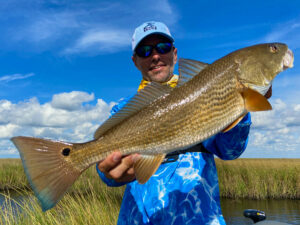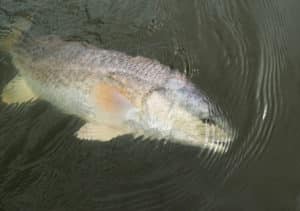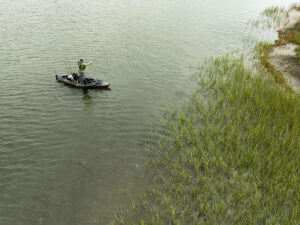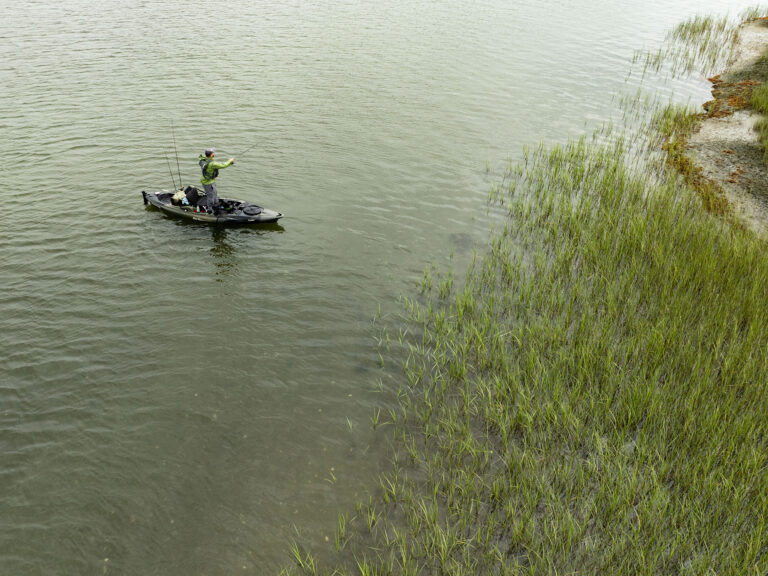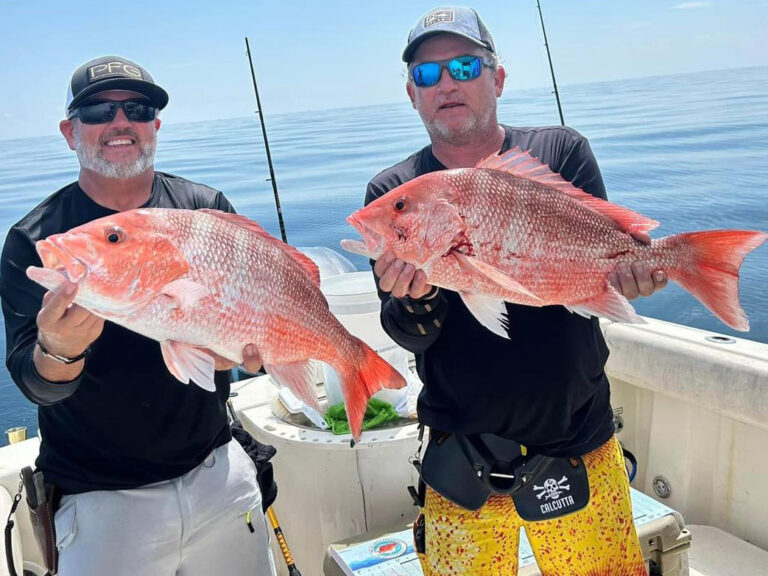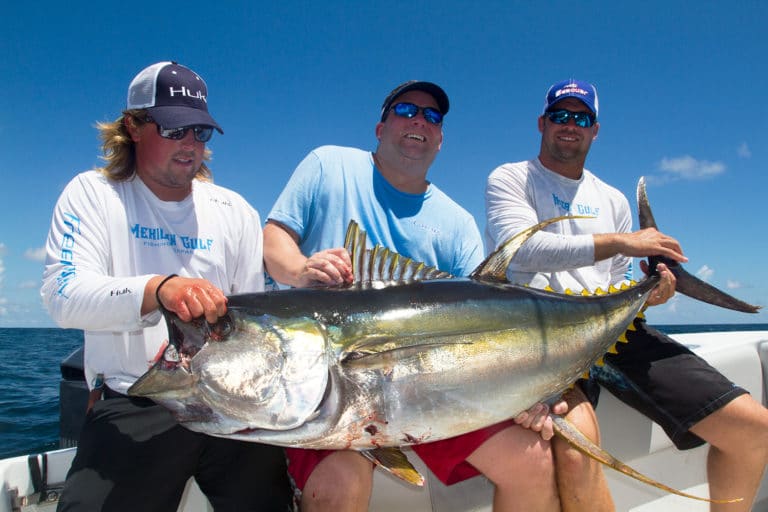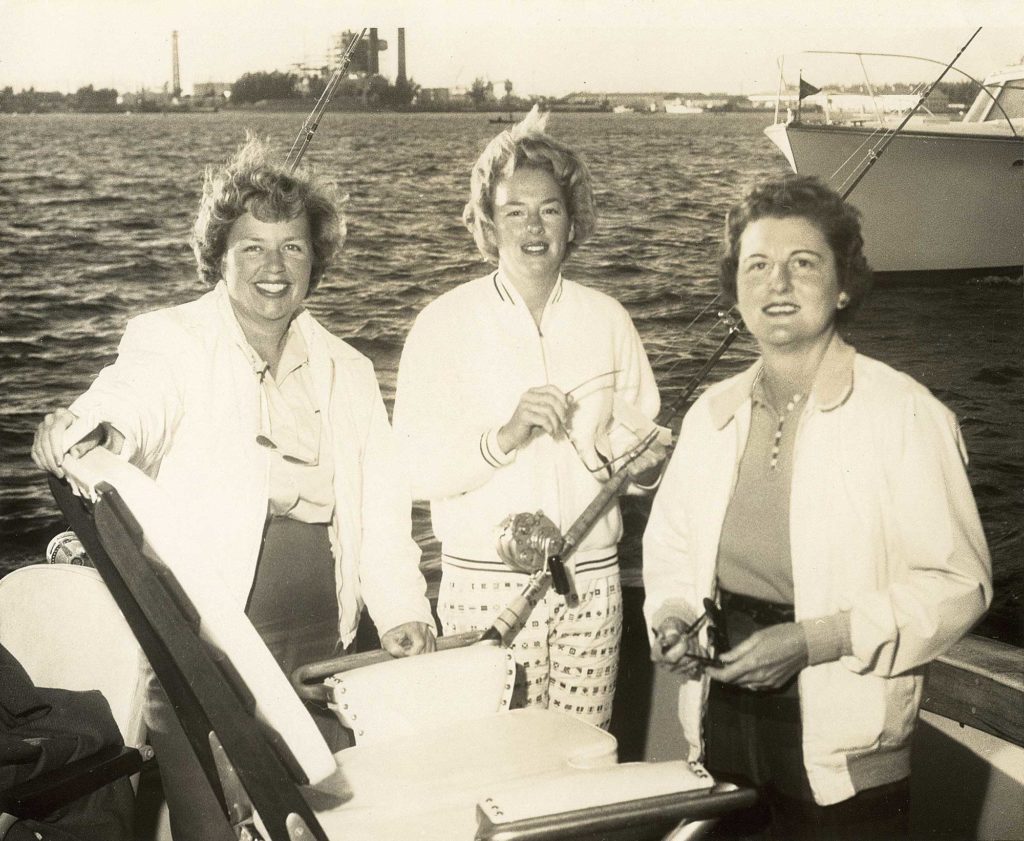
I’d like to think I’m following in the footsteps of Dame Juliana Berners, credited in 1496 with writing the first fishing essay published in English. However, I won’t be titling any of my articles “Fysshynge with an Angle,” as Berners termed her Middle English piece.
But I am a female fishing writer, as was the dame and a handful of others before me. I am also a fisherman, participating in and loving a sport dominated by men. Toward that purpose, I am definitely among many, many friends.
While much has been written over the past 65 years about men and fishing, and most articles focus on men and techniques and tackle designed by men, a good number of women have fished in the background — and yes, often as girlfriends or spouses. However, a hardcore minority comprising at least three generations of women since the mid-1950s have wanted more: They’ve learned their knots, paid their dues, and if they were lucky enough, traveled and fished worldwide.
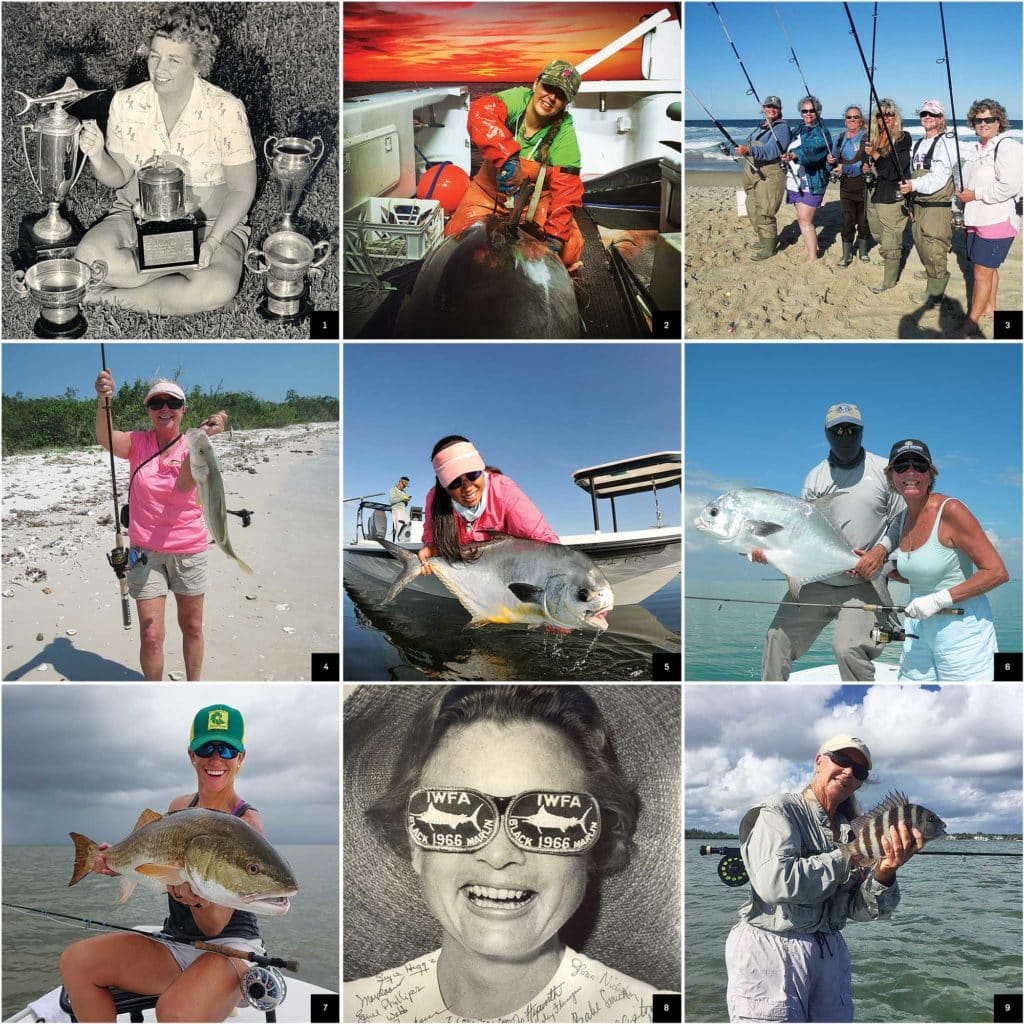
Those of us “of a certain age” watching younger women now representing product manufacturers and seeing new interest in creating a female market in a world flush with single-mother households gives us some gratification. Sure, men can and will command the market, but providing women an easier entry and greater opportunities into the sport should be a win-win.
To take a look at where we’ve been and where we’re going, I pored through archival articles and queried a handful of dedicated women anglers.
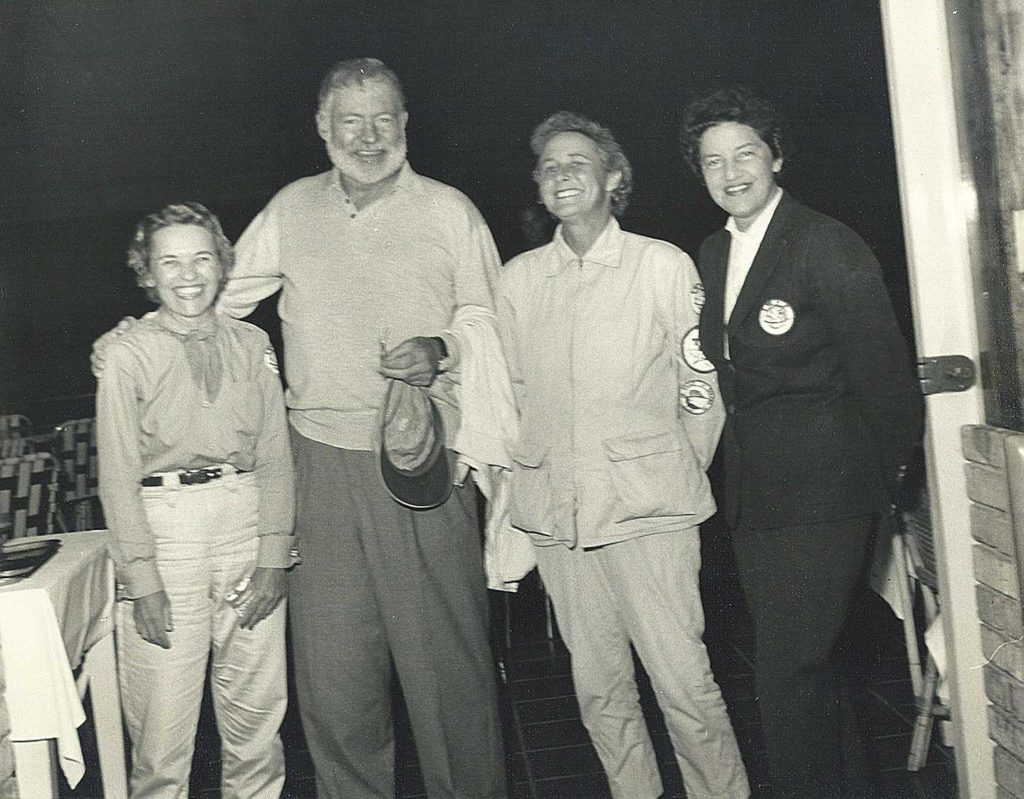
Competitive Origins
In 1955, Velcro was invented, cigarettes were sold in vending machines, and three women founded the International Women’s Fishing Association in Palm Beach, Florida. Kay Rybovich, Denny Crowninshield and Ginny Sherwood — all publicly referred to with the title “Mrs.” followed by their husbands’ names — had grown tired of participating in fishing tournaments solely on “Ladies’ Day.”
Clearly many other women felt the same. Within two weeks, the IWFA had signed up 16 members, and within six months, the roster topped 100. At its peak, the association listed more than 500 members.
“In 1955, during the International Sailfish Tournament, it was Ladies’ Day, and I was out with Ginny Sherwood and Denny Crowninshield, and we were enjoying the fishing so much,” Kay Rybovich told Janet DeVries, an archivist for the Boynton Beach City Library, for an IWFA archived article. “We decided we wanted to fish more. We said: ‘Let’s do something about it. Let’s get our own ladies group,’ and Ginny and Denny said, ‘What a wonderful idea.’”
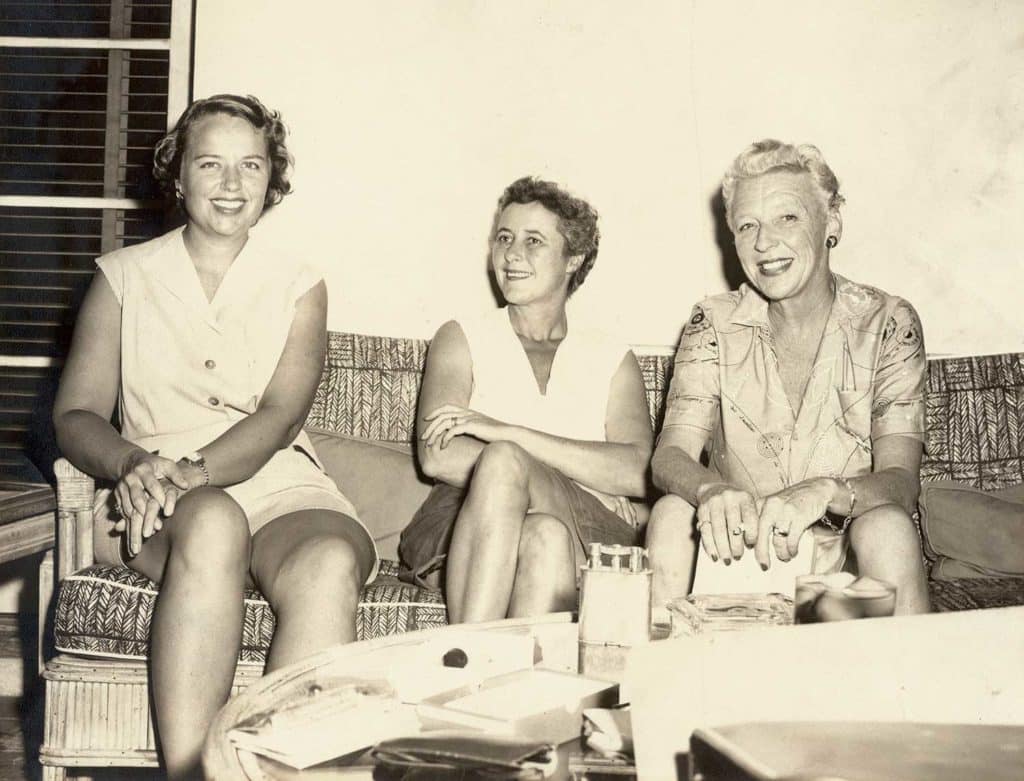
The IWFA facilitated four women’s tournament competitions a year, many in far-flung locations such as Acapulco, Mexico; Cabo Blanco, Peru; and Andros, Bahamas. Members could also compete in their home fishing waters for monthly and annual prizes — many focused on racking up release points, a major emphasis for the group.
The association also promoted light-tackle fishing. In fact, members made repeated attempts to break the gender barrier at the then-popular International Light Tackle Tournament Association, without success. However today, the IWFA is listed on the ILTTA website as a member club.
Notably, an IWFA team won the prestigious Hemingway Marlin Tournament in Havana, Cuba, in 1956, besting 200 men. Newspapers referred to the members as “anglerettes,” and in photos beside gantry-weighed fish, they posed in well-pressed shorts outfits and sometimes low, slingback heels.
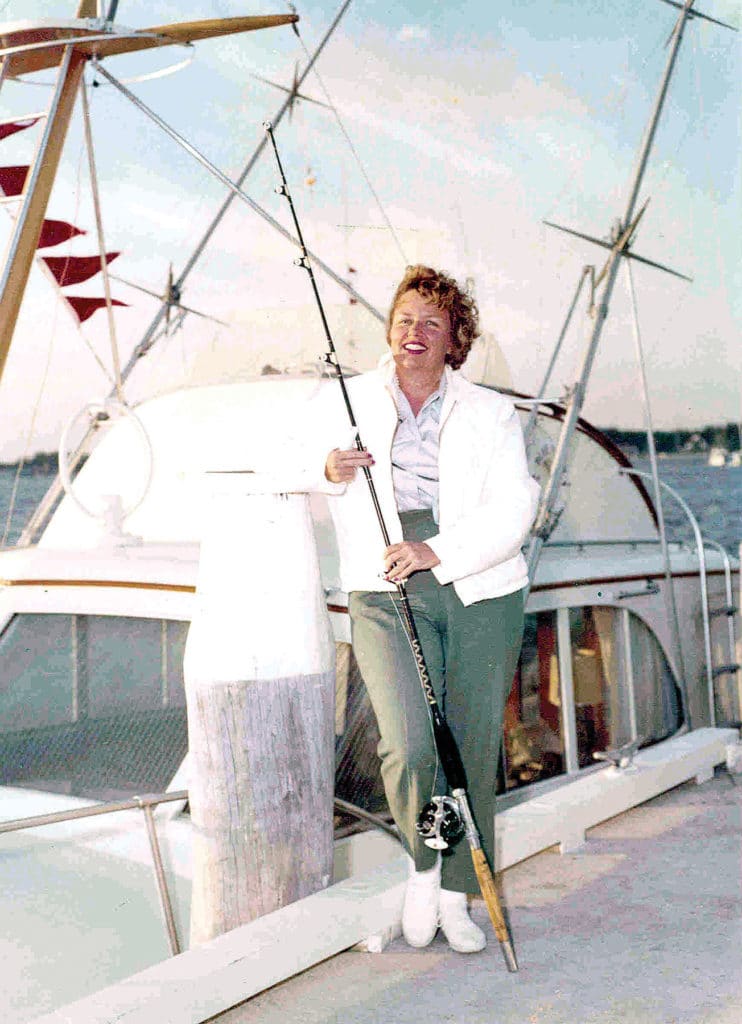
The founders shared some common history, according to assorted articles and IWFA biographies. Crowninshield started fishing when she was in her mid-30s, after World War II in Palm Beach, where she had moved with her then-husband, Ben. The couple divorced in 1953, but Crowninshield kept fishing. She died only months after helping launch the IWFA as its first president, at age 45.
Rybovich’s father was a ship’s captain during World War I; she grew up in New Jersey with some knowledge of boats. Her first date with husband and West Palm Beach boatbuilder John Rybovich was offshore, where Kay caught her first sailfish and learned about catch-and-release. Rybovich passed away in 2016 at the age of 99.
Archives mention little about Sherwood’s fishing interests, but she actively promoted tournament fishing within the IWFA and started a scholarship program for marine‑science students.
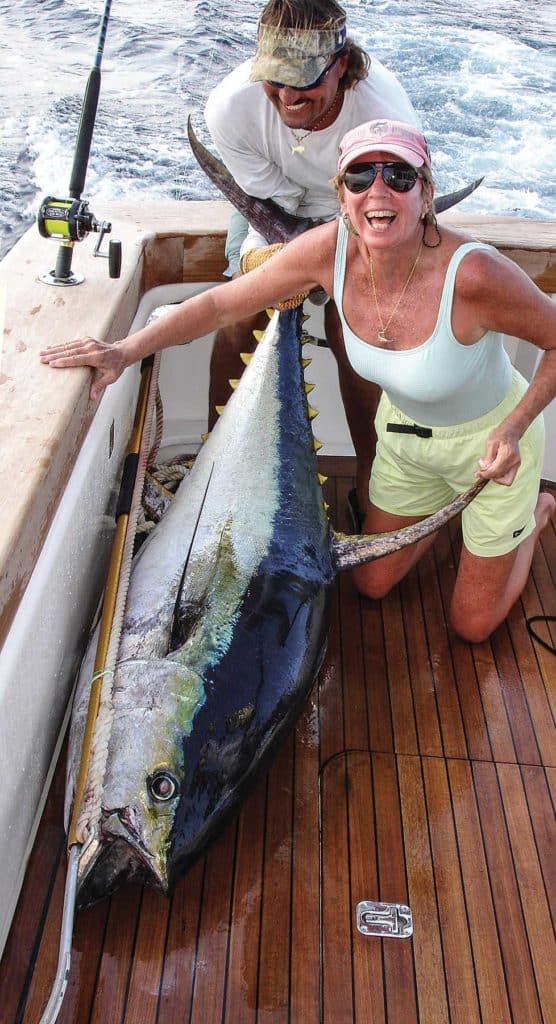
Carrying Forward
Betty Bauman, Capt. Joan Vernon, Capt. Marcia Foosaner and Annah Petty have made significant waves in the fishing world during the past 20 to 30 years. They are four of many.
Bauman started Ladies Let’s Go Fishing in 1997 to offer women a “No-Yelling School of Fishing” — an allusion to the way men often relate to women on board. In 21 years, LLGF, based in South Florida, has graduated more than 8,000 women in 42 states.
Vernon, an IGFA Hall of Fame member, fished throughout her childhood, moving to Florida in 1970, where she began competing in tournaments. In 1987, she became a charter captain, and in 1996, founded Sporting Traditions, which produces the Presidential Challenge fishing‑tournament series.
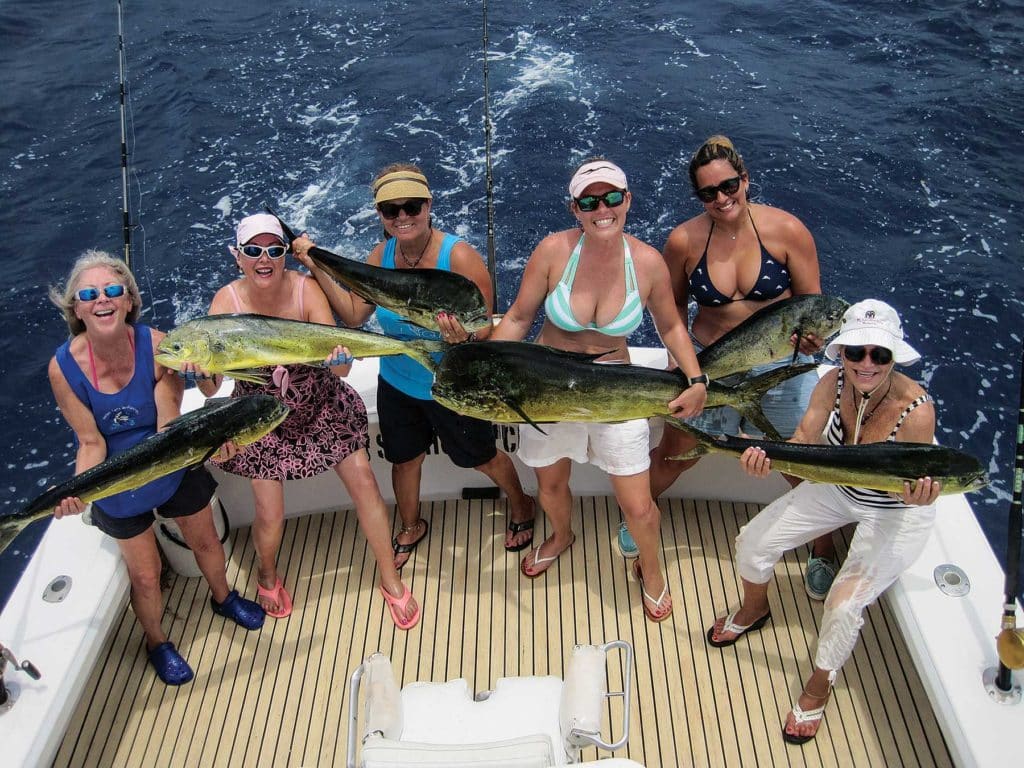
A Floridian, Foosaner has been a fishing guide and fly-fishing tournament angler; Petty, from North Carolina, avidly fishes tournaments.
All four said they believe that more women have started to fish, though they still see many barriers to easy participation. “Up until a few years ago, it was very difficult to get into saltwater fishing because nobody took us seriously,” Vernon says. “At one point, most tournaments would not accept women anglers. In today’s world, women are welcomed and have gained acceptance as good anglers.”
At LLGF events, Bauman says she asks women what has kept them from fishing. “The intimidation and complexity of the sport, plus lack of mentorship,” she says. Other reasons include seasickness, the “ick” factor, can’t launch the boat, feeling bad for the fish, leaving too early in the morning, nobody to fish with, and fear of embarrassment.
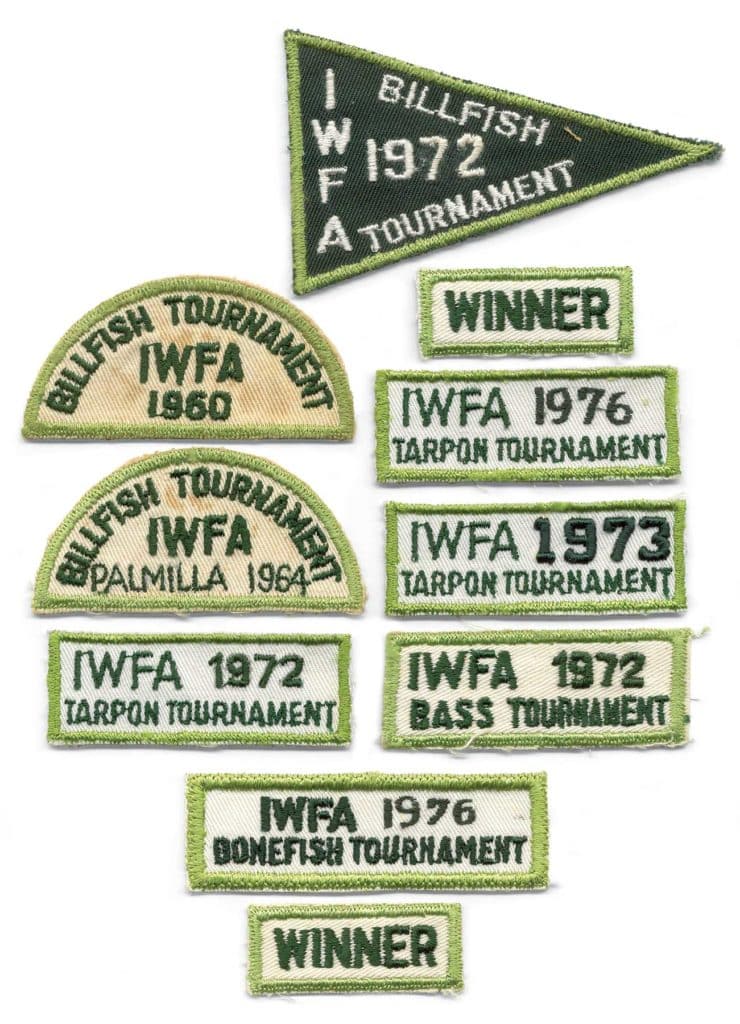
When women fish together on a team, competition among them dissolves, and anyone’s success becomes everyone’s. “We have great camaraderie,” says Petty, who belongs to the IWFA and has taught her own daughter, now 18, to fish. “We can turn a blow day into a fun day of cards and games and, of course, fish stories.”
Petty agrees that often women feel intimidated by fishing or they just don’t see an opportunity. She suggests finding a friend who fishes, joining a fishing club, stopping by a tackle store, or chartering a guide.
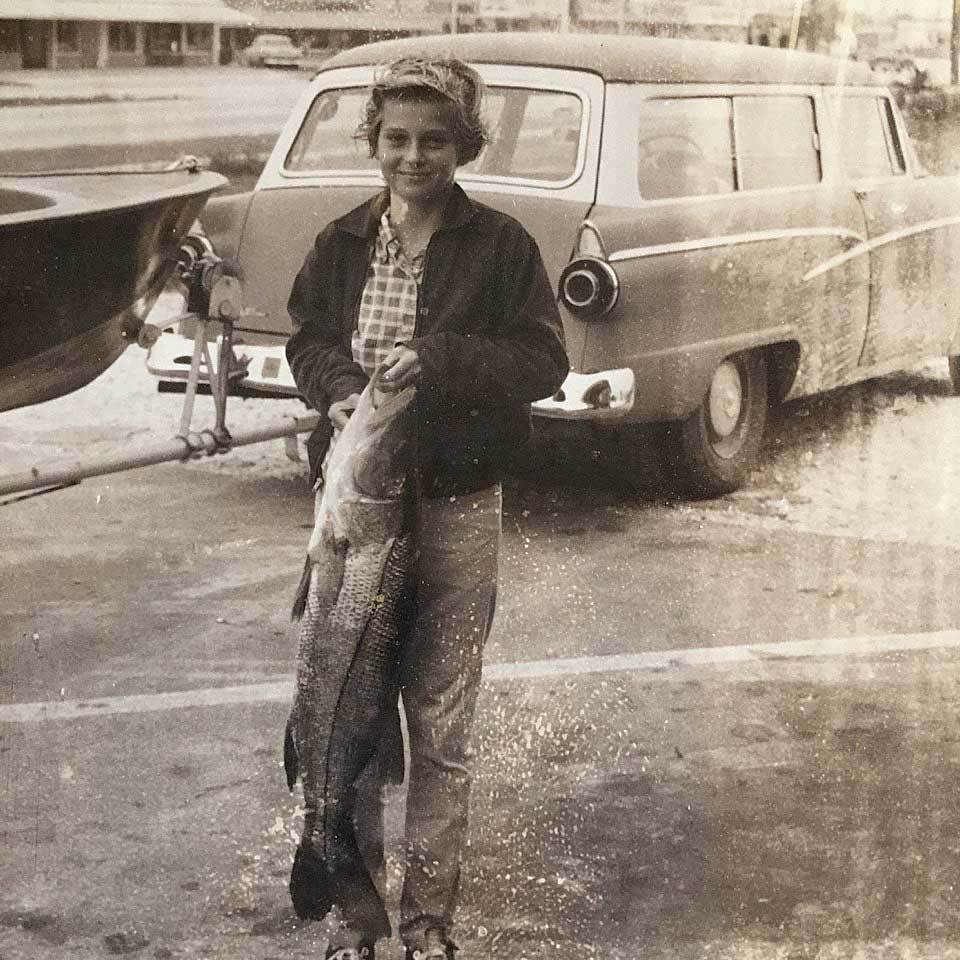
Foosaner says in her home area of Stuart, Florida, she has been involved in ladies’ fishing programs and classes, where even young girls are starting to show in greater numbers. Social media also helps women anglers reach out to form networks; she suggested a Facebook group called Women Fish Too.
“There are far more women fishing today than when I started,” she says. “There are more manufacturers making products that appeal to women: smaller grips on rods, lighter tackle, and specialty clothing.”
Vernon agrees, saying that tackle has become lighter weight in general, although she still has problems finding a proper-fitting fighting harness as well as technical-fishing clothing. “Frankly, men’s shirts fit me better than women’s because I’m not in a fashion show and don’t need to show off a small waist. I need room to move.”
Vernon says she would also like to see the tackle industry make a few changes in general: “I’d like to see the tackle industry make better use of talented women in their ads, having women with credibility (not bikini-clad models) participate at trade-show booths, and also have fishing schools with women instructors.”
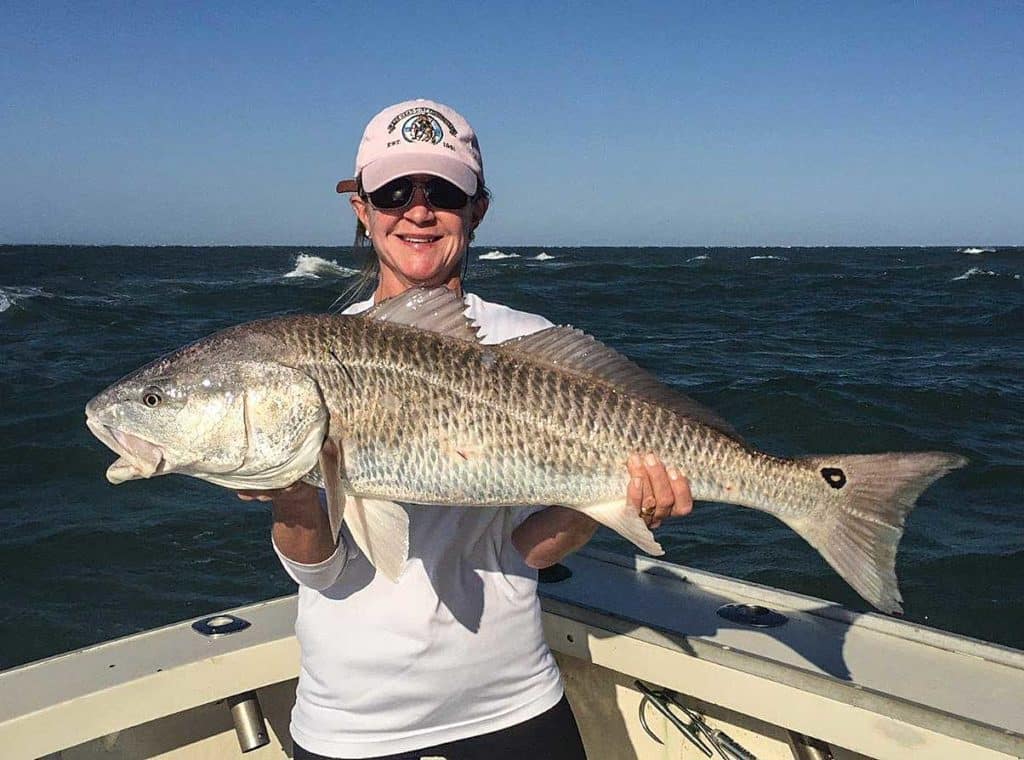
New Ground
Aligning with the former point, the industry appears to be listening. Louisiana captain Monique (Moe) Newman and angler Cindy Nguyen, of Texas, champion a variety of sponsors, including AFTCO, which released a new ladies’ line of fishing clothing in May, and Columbia, where Nguyen was invited to share input about women’s technical-apparel designs.
Both women are young hardcore anglers whose fashion sense focuses more on comfort than body revelation.
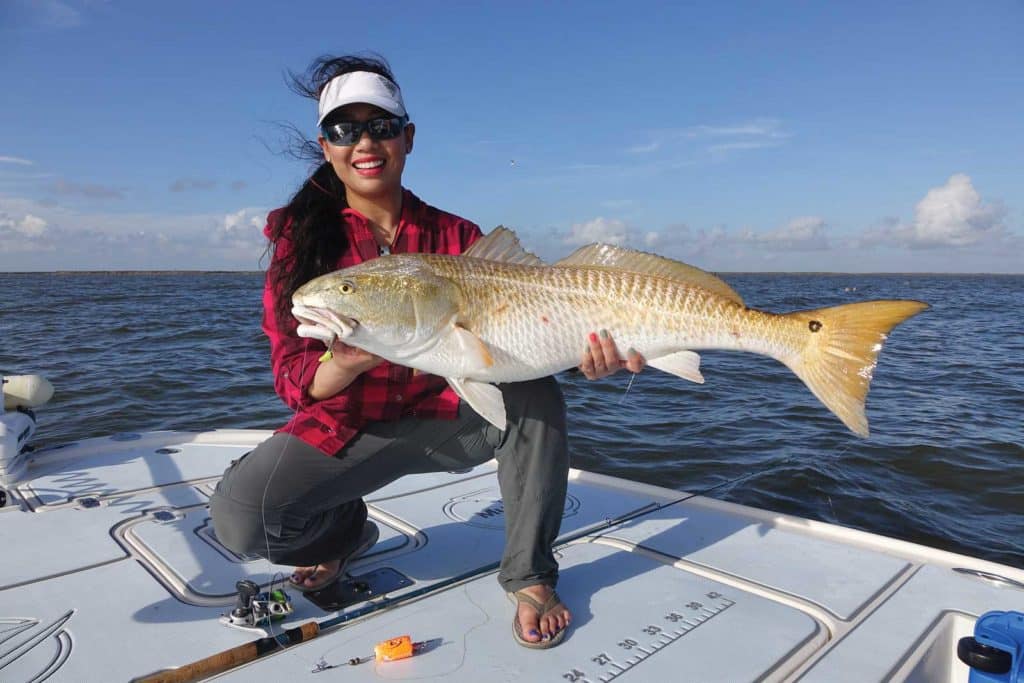
Shannon Ehinger, a Maryland-based mate on a commercial-fishing boat, joined five other women anglers last year as the first-ever all-female team — the Women’s Offshore Alliance — in the White Marlin Open out of Ocean City, Maryland.
Ehinger wrote in an undated Delaware surf-fishing blog: “I currently work in an industry where you have to [every day] prove yourself. [Every day] you have to be tougher than the guy before you or the guy standing next to you. That you are not on a boat to wear a bikini and look pretty. That you belong here just as much as they do.”
In the recreational-fishing world, some of those same issues apply: “It is not easy breaking into this lifestyle and being accepted by men,” Ehinger tells me. “They automatically want to think you are here only because your husband or boyfriend owns the boat or that there’s no way you are tough enough to do the job.”
Ehinger’s family has been working and playing on the sea as far back as she can remember. Her enjoyment of fishing comes from an immense love of the ocean, jump-started by childhood trips with her father.
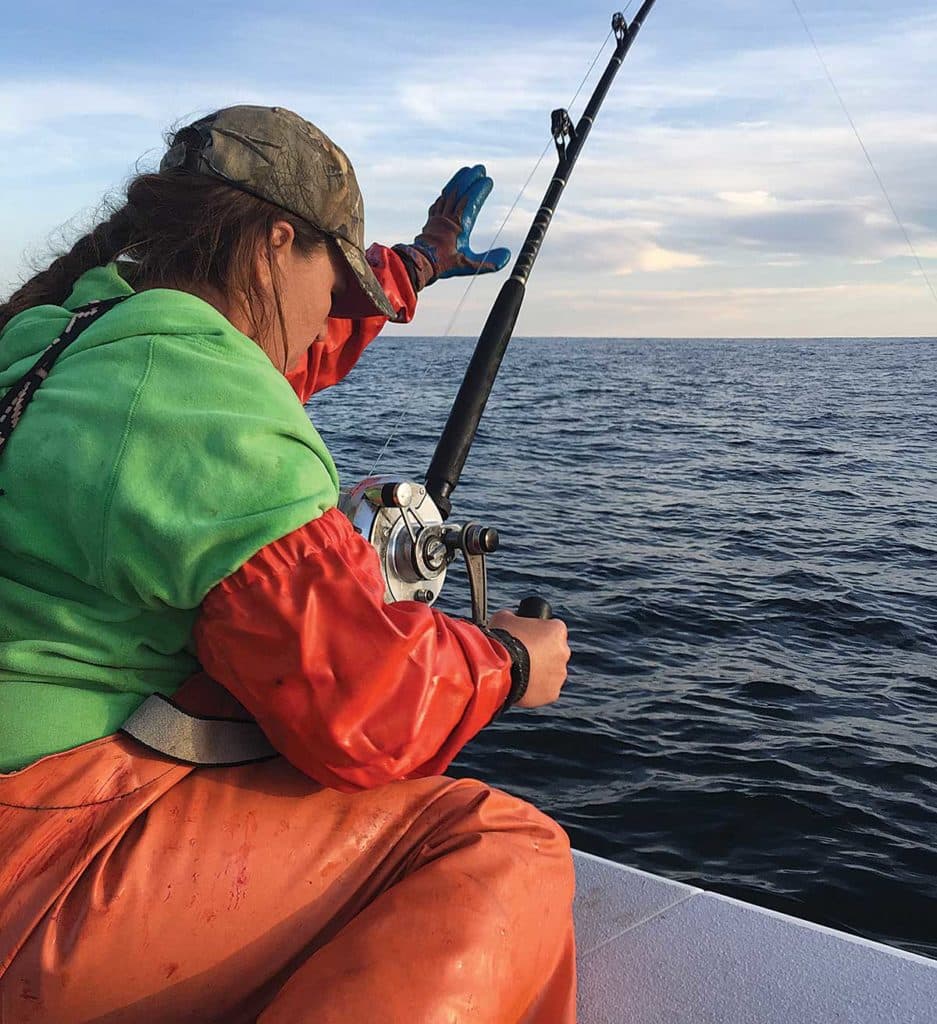
Similarly, Nguyen comes from “a lineage of subsistence fishermen.” She recognizes that women have many obstacles hindering their entry into the sport. “Logistics can be a real obstacle unless you live near the coast,” she says. “Safe accessibility to salt water is imperative before one can begin to learn to fish it.”
She says she’d like to see more grass-roots leadership in communities, and opportunities to introduce the sport to younger women and children. “I believe you can grow into a passion for fishing as an adult if you are surrounded by those who encourage you,” she says. “However, introduction to fishing at a young age has made me every bit of who I am today.”
Nguyen and I fished together in Costa Rica with Columbia several years ago. We both remember that experience similarly: “I was grouped with several women whom I had never met before,” she relates. “We fished for four days, and each brought a wealth of knowledge to the table. Fishing for pelagics brought a whirlwind of emotions. Every fish landed was a victory for our team. My heart still races when I see the photos and footage from that trip.”
Newman, who grew up along the Gulf Coast, says she was on a boat with family by the age of 2 months. As an adult, she has become a U.S. Coast Guard captain and co-owner with husband Eric of Journey South Outfitters.
“Many guys are now seeking me out to bring their daughters, girlfriends and wives fishing,” she says. “My biggest drive is to get more young girls and women on the water.”
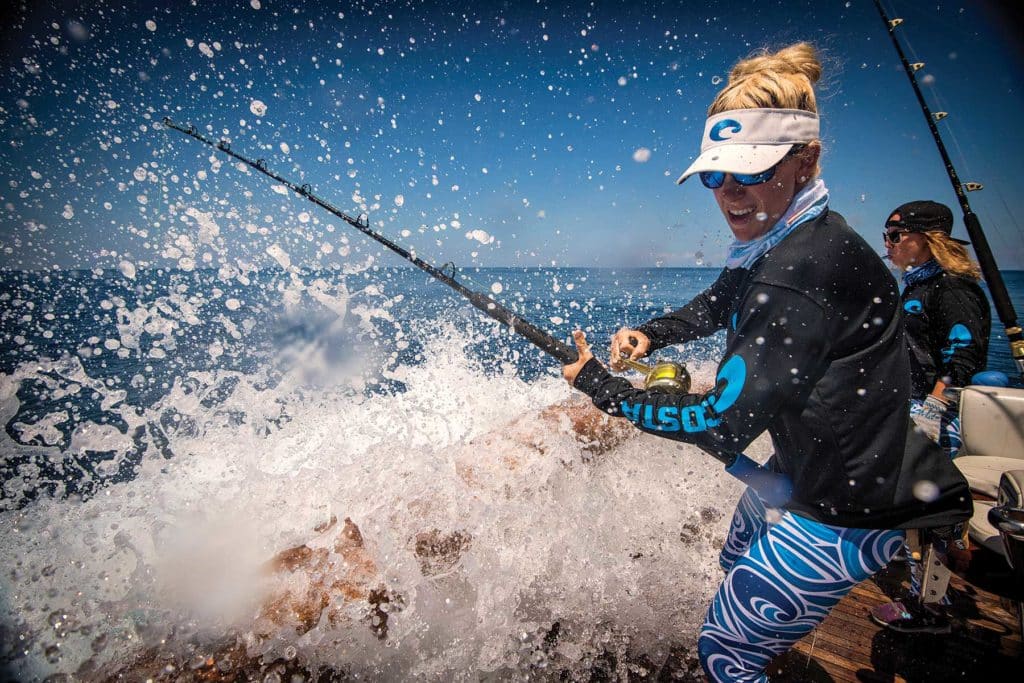
Newman says she works with each woman or girl to find out what’s important to her, what she wants to learn. “Some want to learn about running the boat, and some want to excel at handling fish.”
Two years ago, she says, she took a mother of four boys fishing for her first yellowfin tuna. “Now, she’s up [at the gunwale] to fight her first tuna on stand-up gear. Keep in mind, it is common for us to want to quit when we feel pain or the slightest discomfort. But when you have someone next to you reassuring you that you’ll be OK and that you’re stronger than you think, amazing things happen,” she says.
Read Next: 50 Greatest Women’s World-Record Catches
Working out to build strength appears to be a passion for Newman, who is blond, attractive and athletically built. She has tough words for young women who pose with fish to show themselves off in bikinis. “I would like to see women in this industry clean up their acts. Enough of this ‘let me promote my body,’” she says. “Fish because it’s something you love to do with friends and family. We need to understand that we are who the next generation looks up to …. We need to help instill in them self-worth, confidence and comfort within their own skin!”
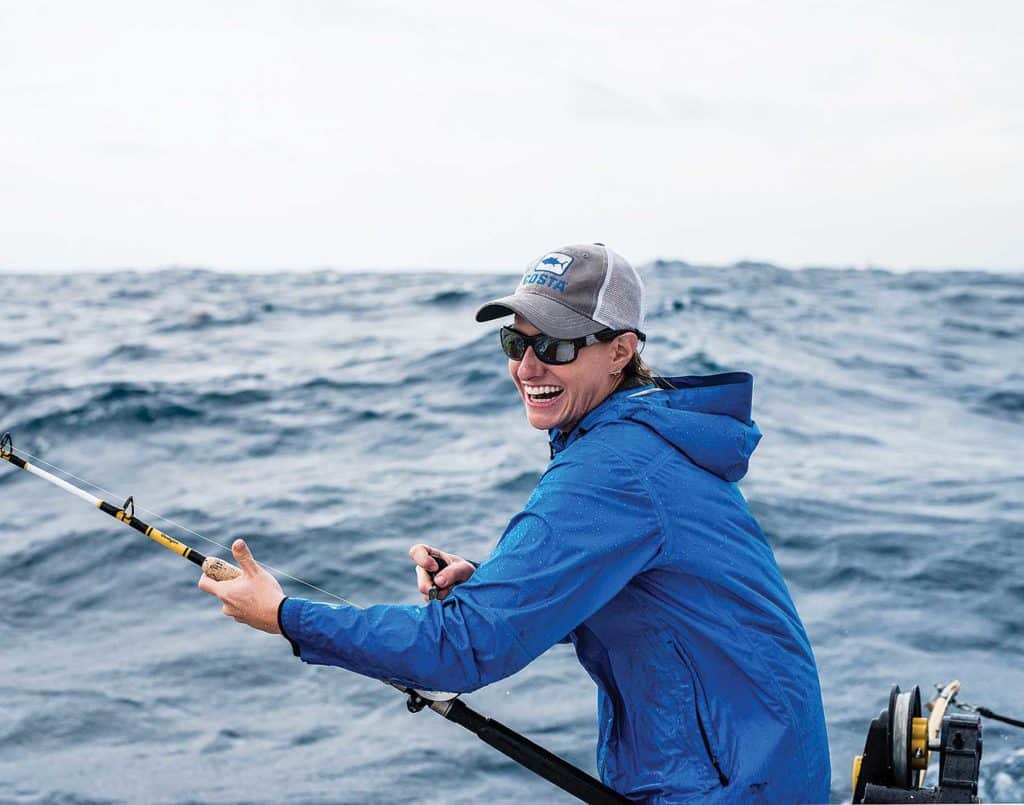
Slam Dunk
Nine billfish in 11 months made Amanda Sabin a member of the vaunted IGFA Billfish Royal Slam Club. Technically, IGFA rules say that Sabin, 33, had her whole lifetime to catch the slam, which includes all five marlin species, Atlantic and Pacific sailfish, a swordfish, and a spearfish. But the fishing-community manager for Costa sunglasses chose to do it all in one epic fishing year: 2017.
“The quest to chase down those fish was one of the most amazing and challenging adventures of my life,” she says. “I lost sleep deciding when to go, where to go and who to fish with. I had limited free time and resources, and had to maximize every single trip to make sure we caught the target species.”
From her Daytona Beach home, Sabin traveled to Key West, North Carolina, Costa Rica, San Salvador, Hawaii and Australia. The swordfish, caught off Miami at night, sealed the deal, 11 months to the day from the first fish, a Costa Rican striped marlin. “When that fish swam into the lights, and I knew it was really going to happen, the waterworks began,” she remembers. “I was so incredibly happy, was shaking and crying tears of joy, and hugging everyone on the boat!”
Sabin is the third woman among nine anglers to capture the royal billfish slam in one year’s time.


